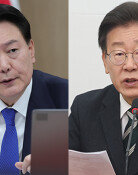McKinsey reports
McKinsey reports
Posted October. 15, 2016 07:22,
Updated October. 15, 2016 07:35
Park Avenue Plaza stands on the 52nd street in Manhattan, New York, and everyone can enter the lobby of the building. One of the most famous tenants of this building is the global consulting firm McKinsey & Company. How irony it is that McKinsey is located in a building where even a beggar can enter while the company’s aim is to protect confidential information of its clients. Companies around the world flock to McKinsey, some secretly, for its consulting advice. Every government on earth does not allow any forms of collusion, but it cannot stop companies looking for McKinsey’s help. Being called “The firm” by the industry members may be the highest compliment to McKinsey.
It was after the onset of the Asian financial crisis in 1997 that the concept of consulting was first introduced in Korea. At that time, McKinsey demanded more productivity from Korean companies that had fed on the so called “can do spirit”. The public went excited to McKinsey stressing importance of added values while denouncing misbehaviors of over-borrowing leading to a drop in profitability. McKinsey called it “destruction of values” in its report. In retrospect, however, we are embarrassed as it was so obvious thing to say.
The power of McKinsey comes from its global network, strategy designing method and long experiences in the consulting business. The process of developing one final report is functionally systemized like a machine from data research to the on-site interview, interim report jointly developed with global researchers, and the final version. McKinsey’s report is published after works by five to 10 researches including project manager and module leader for about three months and it costs about as much as 88,222 U.S. dollars. Is it useful? Well, I can say it is lower than expectation. Back in 2007, McKinsey advised LG Electronics that the company needs to focus more on marketing than technology, but it did not work out.
When asked why it takes too long to come up with measures to strengthen the shipbuilding industry during the National Assembly’s inspection on Thursday, Finance Minister Yoo Il-ho responded that he was awaiting McKinsey’s report. It seems that his solution to save Daewoo Shipbuilding & Marine Engineering depends on McKinsey’s decision. The government may not want to see the financially-troubled shipbuilder going into court receivership after the backfire it faced from putting Hanjin Shipping under court receivership. Unfortunately, after leakage of McKinsey’s interim report saying Daewoo Shipbuilding & Marine Engineering is not likely survive, the company said Wednesday that it will not accept McKinsey’s opinions. Against this backdrop, if the government wants to use McKinsey’s report again, chances are high that it will be brought to the hearing again in the near future.







